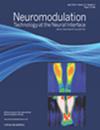Peripheral Nerve Stimulation Implantation Combining Ultrasound With Microendoscopy for Management of Chronic Neuropathic Pain: A Case Series Study
IF 3.2
3区 医学
Q2 CLINICAL NEUROLOGY
引用次数: 0
Abstract
Background
Peripheral nerve stimulation (PNS) has emerged as a minimally invasive percutaneous procedure addressing neuropathic pain. However, the percutaneous cylindrical lead ultrasound-guided implantation procedure requires expertise that limits widespread PNS utilization. To overcome these challenges, a microinvasive endoscopy device has very recently been developed, enhancing the precision of PNS implantation by providing accurate visualization of the targeted nerve. We aimed to determine the feasibility, safety, clinical effectiveness, and energy consumption of PNS therapy by means of ultrasound guidance combined with microendoscopy.
Materials and Methods
This is a retrospective, single-center, single-arm study. Patient recruitment was performed in February and March 2023. Patients with >12 months of upper or lower limb pain presenting with pain >5 of 10 that was refractory to conventional treatments were eligible. Safety was assessed by collecting adverse events and complications related to the PNS implantation with microendoscopy. The Multidimensional Clinical Response Index (MCRI), pain intensity (visual analog scale [VAS]), pain surface (PRISMap Software, PRISMATICS lab, CHU de Poitiers, Poitiers, France), quality of life (EuroQoL 5 dimensions 5 levels [EQ5D-5L]), functional disability (Oswestry Disability Index [ODI]), anxiety and depression (Hospital Anxiety and Depression Scale), and energy consumption were assessed at baseline and at one and three months.
Results
Six patients received PNS, which was implanted through ultrasound guidance combined with microendoscopy. No adverse event was reported during the three-month follow-up. Clinical outcomes (MCRI, VAS, ODI, EQ5D-5L) significantly increased at one- and three-month follow-up. Energy consumption was, on average, 2.6 ± 1.1 μC.s−1 at one-month and 3.3 ± 2.0 μC.s−1 at three-month follow-up.
Conclusions
Implanted PNS by means of ultrasound combined with microendoscopy was safe and provided clinical benefits with very low energy consumption (15–440 times less than spinal cord stimulation) in patients with upper or lower limb neuropathic pain. Microendoscopy would offer extended PNS indications, overcoming limitations associated with ultrasound alone. Future research is nonetheless needed to provide stronger evidence through randomized controlled trial design.
结合超声波和显微内窥镜的外周神经刺激植入术治疗慢性神经病理性疼痛:一项病例系列研究。
背景:外周神经刺激(PNS)已经成为一种治疗神经性疼痛的微创经皮手术。然而,经皮圆柱形超声引导植入手术需要专业知识,限制了PNS的广泛应用。为了克服这些挑战,最近开发了一种微创内窥镜设备,通过提供目标神经的精确可视化来提高PNS植入的精度。我们的目的是确定超声引导结合显微内镜治疗PNS的可行性、安全性、临床有效性和能耗。材料和方法:这是一项回顾性、单中心、单臂研究。患者招募于2023年2月和3月进行。12个月的上肢或下肢疼痛表现为>的患者,10个中有5个难以接受常规治疗,符合条件。通过显微内镜收集与PNS植入相关的不良事件和并发症来评估安全性。多维临床反应指数(MCRI)、疼痛强度(视觉模拟量表[VAS])、疼痛面(PRISMap软件,PRISMATICS实验室,CHU de Poitiers, Poitiers, France)、生活质量(EuroQoL 5维度5水平[EQ5D-5L])、功能障碍(Oswestry残疾指数[ODI])、焦虑和抑郁(医院焦虑和抑郁量表)和能量消耗在基线和1个月和3个月时进行评估。结果:6例患者采用超声引导结合显微内镜植入PNS。3个月随访期间无不良事件发生。临床结果(MCRI、VAS、ODI、EQ5D-5L)在随访1个月和3个月时显著升高。能量消耗平均为2.6±1.1 μC。1个月时s-1, 3.3±2.0 μC。3个月随访时S-1。结论:超声联合显微内镜植入PNS对上肢或下肢神经性疼痛患者是安全的,且能量消耗极低(比脊髓刺激低15-440倍),具有临床效益。显微内窥镜检查将提供更广泛的PNS适应症,克服单纯超声检查的局限性。尽管如此,未来的研究仍需要通过随机对照试验设计提供更有力的证据。
本文章由计算机程序翻译,如有差异,请以英文原文为准。
求助全文
约1分钟内获得全文
求助全文
来源期刊

Neuromodulation
医学-临床神经学
CiteScore
6.40
自引率
3.60%
发文量
978
审稿时长
54 days
期刊介绍:
Neuromodulation: Technology at the Neural Interface is the preeminent journal in the area of neuromodulation, providing our readership with the state of the art clinical, translational, and basic science research in the field. For clinicians, engineers, scientists and members of the biotechnology industry alike, Neuromodulation provides timely and rigorously peer-reviewed articles on the technology, science, and clinical application of devices that interface with the nervous system to treat disease and improve function.
 求助内容:
求助内容: 应助结果提醒方式:
应助结果提醒方式:


